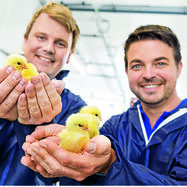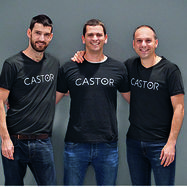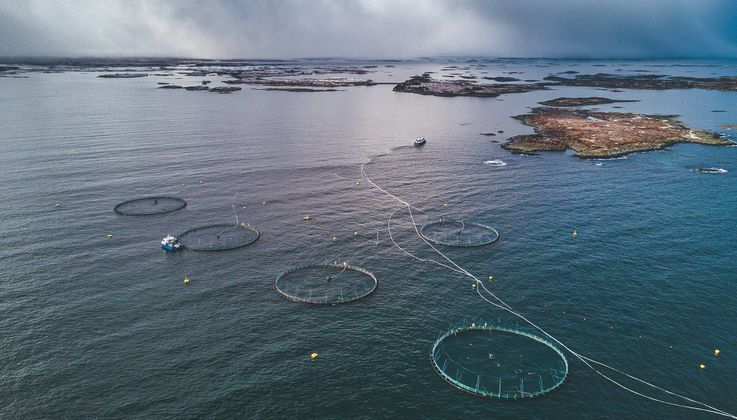
On the shoulders of the giant
Evonik has its own venture capital unit. Unlike a purely financial investor, the Group supports startups not only with capital but also with its expertise and its network — and it benefits from this approach.

is a chemist and the Managing Director of Evonik Venture Capital GmbH, which has total assets of €250 million. His nine-person team, which operates in Germany, the USA, and China, consists of business managers, lawyers, chemists, physicists, and process engineers. The internal structure of the Venture Capital team is aligned with the business areas that Evonik has defined as its especially strong growth engines. The company’s portfolio comprises direct investments as well as shares in venture capital funds.
Mr. Mohr, why are you investing in startups? After all, Evonik is a chemical company, not a financial investor.
Evonik thrives on innovations. Our scientists work day after day on new products, processes, and technologies. But at the same time we realize that there are many researchers and companies all over the world that are developing future-oriented technologies that are extremely interesting for us. It would be stupid to simply ignore them. That’s why we promote young companies that are working on topics that are relevant to us. We provide them with capital and also our know-how—thus opening up our
own path to the whole world of innovations.
The term “venture capital” initially sounds somewhat risky, doesn’t it?
It’s true that when we choose companies to invest in we always assess just how high the risk would be. But we primarily look at the opportunities a company offers for Evonik.
Where do the opportunities lie?
By collaborating with young companies we gain access to new markets, technologies, and business models. We pick up on worldwide trends very early on, and we learn a lot from the way the startups work. We believe that all of these effects are the strategic return on our investments. Whereas traditional providers of capital base their investment decisions on their assessments of purely financial returns, we measure our success by the
sum of financial and strategic returns.
That kind of investment always involves two partners. Why do startups want Evonik to buy their shares?
We don’t just make capital available—we regard ourselves as a partner of these startups. Evonik provides the startup founders with market, technological, and production know-how, as well as our knowledge regarding patent rights. In addition, a partnership with us boosts how a startup is perceived by potential customers and other capital investors. Young companies are looking for a strong partner with which they can work together on an equal footing and gain support for their growth. We can offer that through our experts and scientists, as well as with our laboratories and facilities all over the world.
Can you give us an example?
Yes: Meditool, our first venture capital shareholding in China. Meditool uses the material VESTAKEEP® PEEK from Evonik to make 3D-printed implants that doctors can use to treat people with spinal injuries or to create cranial or facial bone replacements, for example. This application was new for us.
Evonik has been producing VESTAKEEP® PEEK for a long time. What have you gained from your cooperation with Meditool?
In these special applications, our high-performance polymer has to have a very special structure. It not only needs to be accepted by the human body—the patient’s bone and skin has to grow together with the implant. We are now working together with Meditool to optimize our material for precisely this process.
How do you find companies like Meditool?
It takes lots of effort and real teamwork. We look at about 1,200 companies a year, and we subject about 700 of them to a closer inspection. Ultimately we invest in maybe seven of these companies. But if you want to catch the best fish in the pond, you have to get out to all the possible fishing spots.
What about the other 693 companies?
Here too, there are many companies that are very interesting for us. We launch follow-up activities with about 30 companies every year without directly investing in them. Having a worldwide overview of startup companies also enables us to detect technology trends and new business models early on.
Which regions do you look at during your search?
At the whole world. I’m glad we have a team that is so experienced that we can really have a global overview. As a globally operating company, we know that there are innovative companies everywhere that want to connect with us. They might be in China, such as Meditool for example, or in Israel, as with Castor.
What phase are these companies in when you select them?
Our spectrum of investment ranges from the early phase, in which there is often only a prototype, to the growth phase, in which a company is already generating significant sales. The number of employees varies between three and 100.

“Venture capital is an outstanding tool that Evonik uses to gain access to innovations all over the
world while profitably investing its capital. As a Group, we benefit from the startups’ dynamism”
What kinds of questions do you ask the companies that want Evonik as a shareholder?
We want to know about their company’s technology, its business model, and its unique selling points. If we get satisfactory answers to these questions, we also ask them what a future partnership might look like and what we would like to achieve together. What would the startup company bring to the table, what would Evonik bring, and what would be our respective expectations? Another extremely important factor is that I need to see
that they want a partnership with us specifically, with Evonik.
Why is that so important?
Well, venture capital is similar to a long hike. In the beginning everyone’s happy to get started, but the launch is followed by many kilometers that we have to travel together. Our two companies have to be a good fit. It’s important for the startup’s managers to be compatible with us. Are they flexible in response to changes? How do they react to crises? Would they find it acceptable if we bring in external specialists that might earn more than they do themselves? To put it another way, will the smaller company allow the giant to carry it across the stream on his shoulders?
That doesn’t sound like a purely financial relationship.
Ultimately we always invest in human beings. Financial figures are important, but people are crucial.
Let’s stick with the hiking analogy. When do the two paths diverge?
Venture capital is simply a temporary partnership. As a rule, we assume that we will hold our investment for between four and six years. We work together until both partners have achieved their goals to the greatest possible extent and the value of the company has developed well. We can’t assume that both partners will have the same goals over the long term. But even after our shares have been sold, the contact and the collaboration often continue in many respects.
Is the separation painful in itself?
No, in this respect we’re no different from other venture capital providers. The separation—a profitable separation, to be precise—is actually the goal. So far we’ve concluded four shareholdings and subsequently sold our shares in three of them very profitably. We have completely acquired the fourth shareholding, Structured Polymers in Austin, Texas, USA.
But that wasn’t the original plan, was it?
No, but when we originally invested in it in 2017 we more or less laid the foundation stone for a subsequent acquisition. We closely monitored its business developments the whole time. Together, we concluded that Structured Polymers was taking such a huge technological step that it would fit perfectly into our existing activities in the area of 3D printing. At that point we began an acquisition process. However, acquisition by Evonik is more the exception than the rule. We can afford to have an unsuccessful cooperation, but we don’t want things to come to that.
What’s the range of the investments we’re talking about?
Our initial investment volume, measured in millions of euros, is usually at the low end of the single-digit range. We can invest as much as €15 million per company in several rounds of financing. That makes us a strong partner of our portfolio companies in financial terms as well.
Start-Ups (3 out of 30)

IN OVO An estimated 3.2 billion male chicks are killed every year all over the world. That’s because male birds are not raised in poultry farming, since they don’t lay eggs and are not suitable for meat production. The technology created by the startup In Ovo makes it unnecessary to kill male chicks. It has developed a quick and reliable method for determining the gender of chicks while they are still inside the egg. In Ovo is using the capital it has received from Evonik to refine this technology to the point where it can be used commercially in hatcheries. Evonik is reinforcing its Animal Nutrition Business Line by expanding its operations in the area of egg production.

MODERN MEADOW uses a fermentation process involving yeast cells to produce an animal-free collagen—a protein that is a natural component of animal hides. As a result, the startup is helping to sustainably cover the growing need for animal-free products. In its partnership with Modern Meadow, Evonik is expanding the production of collagen to commercial dimensions. Collagen can be found in many application areas. As the most frequently occurring protein in the human body, it can be used for pharmaceutical and medical applications, among other things. Evonik is investigating the potential of biotechnologically produced collagen for the healthcare market.

CASTOR TECHNOLOGIES The software from Castor tests the printability of components, determines the ideal printing material, and calculates production costs and lead times. This helps manufacturers that have so far used traditional production methods such as injection molding to decide whether and how they can use 3D printing. Evonik is bringing its expertise in the area of
printing materials into this partnership and is supporting Castor’s efforts to make its software available to many different sectors. Evonik can thus also offer services to its customers, who now can identify those components that could be printed with high-performance polymer powders and filaments.



